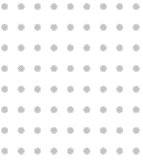The umbilical cord was your baby’s lifeline during their nine months of stay in your womb. It’s the one line that connects you two and allows the oxygen, food and nutrient-rich blood to flow to your baby when they’re still in your belly. It’s the one thing helping you sustain a life inside your belly. Magical, right?
After birth, your baby can breathe and eat on their own. So, the umbilical cord is no longer needed – the doctors will clamp and cut the cord leaving a short piece of it called the stump. This stump will be attached to your baby’s belly button and will eventually dry and fall out in about 1 to 3 weeks.
However, it’s important to keep the stump clean and dry until it falls off to prevent infections. In this blog, we’ll go over newborn umbilical cord care so you can ensure your baby’s wellbeing.
Keep the stump dry
In the past, doctors instructed mothers to rub alcohol at the base of the stump several times a day to help it dry out. New studies have shown that this practice might actually kill the bacteria that helps the stump dry and lengthen the process, the exact opposite of what you are trying to do.
Instead, let it air out. If you are having your baby wear diapers, keep the front side folded down below the stump to avoid covering it. Also ensure that your baby’s diaper isn’t touching the stump at all!
AND… *Drumrolls* Snuggy Newborn Baby Diapers come with complete navel protection for your baby! You can easily find Snuggy newborn baby diapers online on Amazon and Flipkart.
Stick with sponge baths
Skip the tub-bath altogether; submerging the stump in water can prolong the period it takes to dry. Stick to sponge baths. Wrap your baby in a towel and wash each part of their body with a bathing sponge, even a washcloth works.
If the area around the cord is dirty, or if your baby pees or somehow manages to get poop on the stump, there is no harm in wiping the cord gently with water and letting it air dry.
Let the stump fall off on its own
It might seem like a good idea to help the stump fall off sooner, but it is a BAD IDEA! Let the stump fall off on its own even if it seems like it’s hanging on by a thread or dangling around. Never try to pull it off, it might cause unnecessary bleeding and harm your baby. Patience and resistance to temptation is the key, you’ll learn it.
Signs of a Problem
During the healing process, be on the watch out for any signs of infection.
It’s typical to see a little blood near the stump and the stump might even bleed a little when it falls off. But, if the bleeding doesn’t stop, call your doctor immediately. This bleeding might be a sign of an infection.
Other signs include
• Skin around the stump looks red, swollen or tender.
• The belly button feels warmer than the skin around it.
• Foul smell and puss like discharge around the belly button.
• If your baby feels pain or uncomfortable when the belly button is touched lightly.
Call your doctor right away if you suspect an infection, quick treatment is necessary. Also call your doctor if the stump doesn’t fall off even after three weeks, that’s too long and might be a sign of an underlying problem.
It’s a good idea to continue giving your baby sponge baths for a couple of days after the stump falls. This ensures that the skin around the fallen stump heals properly and completely. And with learning the newborn umbilical cord care procedures, you’re good to go! If you have doubts or queries, please let us know in the comments and we’ll get back to you.





